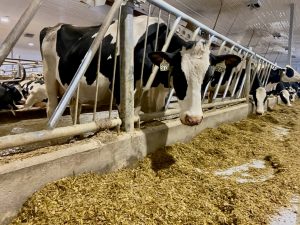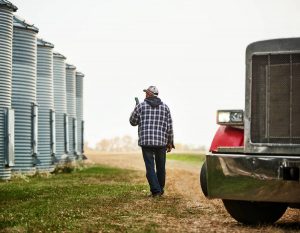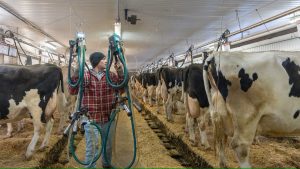
After the terrible flooding in B.C. last November, a Senate committee on agriculture and forestry recently asked Ottawa to work with the government of B.C. and local governments to make a plan to stop flooding in the Fraser Valley.
Sarah Sache, vice-chair of the B.C. Dairy Association and a dairy farmer in the Fraser Valley, said, “From a food security point of view, we need to protect this area.”
“A lot of food is grown in this small part of our province. So, it’s very important to make sure we have plans and resources ready to protect this area in case something bad happens.
There are already plans to make a flood management strategy for the Lower Mainland, but it is four years too late. The plan for flooding in British Columbia that was promised won’t be ready until next year.
Many reports have warned about the effects of climate change, including one from the B.C. auditor general in 2018 that said the provincial government was not doing a good job of managing the risks that climate change posed and that key climate-driven risk areas, like flooding and wildfires, needed more attention.
The Senate committee says that a plan for flooding in the Fraser Valley should include a schedule for fixing the dikes and the creation of a committee to look at ways to reduce flooding as well as emergency planning and response strategies.
Sache said that it’s not as important to her how long it will take to finish flood protection work as it is to get that work started.
She said that the City of Abbotsford was trying to get started on its plans for flood protection, which would cost billions of dollars. First, a new pumping station would have to be built. No one has paid for it yet, and no work has been done.
In its report, the committee said that the floods hurt more than 1,000 farms, 150 square kilometres of land, and 2.5 million animals. It was thought that the floods cost farmers about $285 million.
The committee has also told Ottawa that it needs to make sure it has enough money and people to help people, businesses, and communities that are hurt by natural disasters like floods.
The fact that cities and First Nations don’t have enough money to do what needs to be done to protect against floods and wildfires is a big problem. Postmedia did some research and found that it will cost at least $13 billion.
Postmedia asked the federal government and the provincial government if they would make a plan for flooding in the Fraser Valley, but neither would say.
Tyrone McNeil of the Stó:l Nation in the Fraser Valley says that the Senate report misses the point that First Nations need to be involved in planning for flood protection. This is because B.C. has made the UN Declaration on the Rights of Indigenous Peoples its guide for bringing people together and dealing with important issues like adapting to climate change.
McNeil, who is the head of the First Nations Emergency Planning Secretariat, said that the Senate report also doesn’t address bigger issues in flood management that need to be thought about, like restoring flood plains and waterways and moving and removing some dikes in addition to raising dikes.
He said that this work should also think about the environment and how it will help salmon, which also provide food.
McNeil and the heads of local governments are working together to come up with a plan for flooding on the lower Fraser River.
McNeil said that they had asked Emergency Management B.C. for money so that they could hold more meetings, including with farmers, to make a plan.
In a written response to the Senate report, Annie Cullinan, a spokesperson for the Public Safety Ministry, said that the federal government will keep working with B.C. and local governments to “explore options” for better rebuilding after the floods.
The Ministry of Forests in British Columbia, which is in charge of dikes, said that the province is excited to work with Canada and First Nations to make it less likely that B.C. will flood.

























